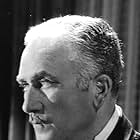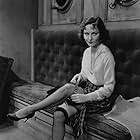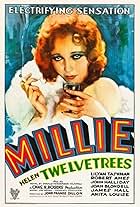An errant husband wants to return to his wife.An errant husband wants to return to his wife.An errant husband wants to return to his wife.
Photos
Junior Durkin
- Henry Parr
- (as Bernard Durkin)
Louise Beavers
- Maid
- (uncredited)
Eleanor Gutöhrlein
- Dance Specialty
- (uncredited)
Karla Gutöhrlein
- Dance Specialty
- (uncredited)
Gladden James
- Partygoer
- (uncredited)
Wilbur Mack
- Jeff
- (uncredited)
Earle Wallace
- Dancer
- (uncredited)
Storyline
Did you know
- Trivia[Forward] Not all stories happen in New York and Chicago - shake hands with Detroit.
Featured review
Honestly? A 5.5 out of 10 for this wonderful little Vitaphone comedy? I might give the print I saw that rating but not the film! And the image gallery for this film has one image that looks like it was an outtake, and another that show actresses that weren't even in this film!
Having never been shown on Turner Classic Movies, even though TCM's parent company retains the rights, it seems like everybody has forgotten this one. And that is too bad, because it is a splendid little romantic comedy made at a time - 1930 - at the dawn of sound when even the big studios like MGM were having difficulty with the new medium of talking pictures.
Warner Brothers, true to their working class roots, has this film set in Detroit, even though the players are wealthy. The Depression has not set in yet, so everybody is doing well. So the Parr family is out on the town one night - Brentwood (John Halliday), Helen (Belle Bennett), and their thirteenish son Henry (Junior Durkin). Henry suggests they go into the ballroom - the "Moon Room" - because it has the best jazz band in town. This is what happens when you let a kid barely into his teens wear a top hat!
In the ballroom the main act, singer Peggy Price (Dorothy Burgess), is instructed by Rawlins, a friend of Brentwood's, to shine her mirror in Brentwood's face and flirt with him during her act so as to make the guy uncomfortable. Well it does. That night. But Brentwood can't get Peggy out of his mind, and soon he is keeping close company with her. He brushes it off as a passing phase, and thinks that he can keep his wife in the dark by claiming to be away on business in Cleveland. Well Brentwood is about to find out that both of these ladies are out of his league when it comes to cleverness and ingenuity.
Brentwood soon finds the jig is up, that his wife wants a divorce, and then he marries the girl - Peggy - and finds out that the grass is always greener until you have to mow it every week. Peggy, probably a girl in her early 20s, is bored by a quiet evening at home and either wants to always go out on the town, or bring "the town" -her gang - home for an all night party. And Brentwood, a man of 50, is finding he needs his sleep even if it is at the office. How will this all work out? Watch and find out. And since that seems impossible these days, please nag the Warner Archive to restore this one and get it out for everyone to enjoy.
This film is just very well done in comparison to everything else WB was doing that year. The players are absolutely wonderful and natural in their performances. This talkie is not "over talky" and has some great dialogue. Plus the art design is very good. I kept looking for those poverty row roots you find so often in early talking WB films, and I just couldn't find any, not even in the night club scenes. There is a chorus line dance number towards the beginning, and even pre Busby Berkeley, the chorines seem to get the concept of cinematic choreography.
Charles Kenyon wrote the screenplay and John G. Adolfi was the director. Both of these people worked with George Arliss when he was at Warner Brothers, and I wonder if Arliss' sense of mischief in his early films rubbed off on them, because this film certainly has that Arliss sparkle. I would highly recommend this one, even if you have to view a less than pristine print.
Having never been shown on Turner Classic Movies, even though TCM's parent company retains the rights, it seems like everybody has forgotten this one. And that is too bad, because it is a splendid little romantic comedy made at a time - 1930 - at the dawn of sound when even the big studios like MGM were having difficulty with the new medium of talking pictures.
Warner Brothers, true to their working class roots, has this film set in Detroit, even though the players are wealthy. The Depression has not set in yet, so everybody is doing well. So the Parr family is out on the town one night - Brentwood (John Halliday), Helen (Belle Bennett), and their thirteenish son Henry (Junior Durkin). Henry suggests they go into the ballroom - the "Moon Room" - because it has the best jazz band in town. This is what happens when you let a kid barely into his teens wear a top hat!
In the ballroom the main act, singer Peggy Price (Dorothy Burgess), is instructed by Rawlins, a friend of Brentwood's, to shine her mirror in Brentwood's face and flirt with him during her act so as to make the guy uncomfortable. Well it does. That night. But Brentwood can't get Peggy out of his mind, and soon he is keeping close company with her. He brushes it off as a passing phase, and thinks that he can keep his wife in the dark by claiming to be away on business in Cleveland. Well Brentwood is about to find out that both of these ladies are out of his league when it comes to cleverness and ingenuity.
Brentwood soon finds the jig is up, that his wife wants a divorce, and then he marries the girl - Peggy - and finds out that the grass is always greener until you have to mow it every week. Peggy, probably a girl in her early 20s, is bored by a quiet evening at home and either wants to always go out on the town, or bring "the town" -her gang - home for an all night party. And Brentwood, a man of 50, is finding he needs his sleep even if it is at the office. How will this all work out? Watch and find out. And since that seems impossible these days, please nag the Warner Archive to restore this one and get it out for everyone to enjoy.
This film is just very well done in comparison to everything else WB was doing that year. The players are absolutely wonderful and natural in their performances. This talkie is not "over talky" and has some great dialogue. Plus the art design is very good. I kept looking for those poverty row roots you find so often in early talking WB films, and I just couldn't find any, not even in the night club scenes. There is a chorus line dance number towards the beginning, and even pre Busby Berkeley, the chorines seem to get the concept of cinematic choreography.
Charles Kenyon wrote the screenplay and John G. Adolfi was the director. Both of these people worked with George Arliss when he was at Warner Brothers, and I wonder if Arliss' sense of mischief in his early films rubbed off on them, because this film certainly has that Arliss sparkle. I would highly recommend this one, even if you have to view a less than pristine print.
Details
- Runtime1 hour 17 minutes
- Color
Contribute to this page
Suggest an edit or add missing content
















